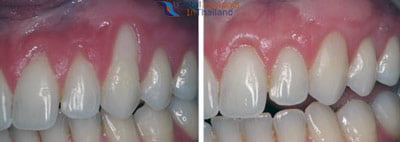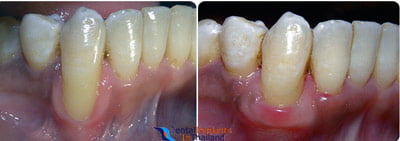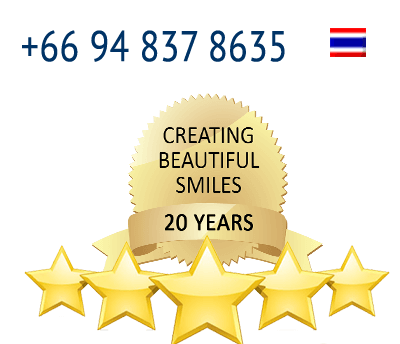
Gum Grafting Surgery in Thailand
Gum grafting is a common dental procedure that aims to address two dental dilemmas: Gingival recession and smile makeover.
Ridge Preservation – Video
Gingival Recession
Your gums, or gingiva, is the pink tissue that surrounds the bone supporting your teeth. Normally, only the crown of the tooth is visually evident when you smile. However, if you currently notice extra space in junction between the clinical crown and the root of your tooth, then this may be an early warning sign of gingival recession. Over time, the gum naturally recedes and exposes the hidden parts of your mouth causing additional strain on other dental mechanics creating the perfect environment to compromise your oral health.

This receding condition goes unnoticed most of the time, most especially at the onset, because there are loud warning signs or symptoms that can make you notice. Recession occurs gradually over the years, and only when you’ve felt a certain amount of sensitivity do you take note of it. This is because inlays and onlays or the exposed part is sensitive to the external forces of brushing or chemical reactions with food. At times, you may even only notice it when it already looks distracting and affects your smile.
Fly to Thailand for a Smile Makeover
At this point, you’re probably considering having a gum graft either in your home or in Thailand because it has affected your smile,confidence or physical appearance. However, the more serious repercussion of untreated gum recession is tooth loss, because the support system of the tooth eventually diminishes. Let’s face it – we often feel the need for a change or smile makeover when our looks have deteriorated; function sometimes takes the backseat.

Types of Gum Grafts We Offer
- Connective tissue grafts – The most commonly used method to address gum recession is by using graft tissue that is usually harvested from the subepithelial connective tissue layer – The subepithelial layer is the portion underneath the tissue protecting your palate (roof of the mouth). The underlying tissue is removed and stitched upon the affected region, while the palatal flap is stitched back.
- Free gingival grafts – The graft tissue is harvested from the palatal area, with a small portion of soft tissue directly removed and attached to the affected area. This may be performed if you need gum augmentation because of a naturally thin gingival tissue or gum disease.
- Pedicle grafts – As opposed to the other two procedures, the harvest area is only around the vaneers or tooth requiring a repair. The flap, or pedicle, is partially incised, leaving the other edge still attached to the rest of the gingiva. The free edge is pulled down and over the exposed area and stitched upon it. However, sinus lifts and pedicle grafts may only be possible if you have a substantial amount of gingival tissue adjacent to the tooth in question.
Alternatives to Gum Grafting: Tissue Banks
Some patients requiring orthognathic surgery require graft material from a tissue bank because there are certain proteins that are tissue-stimulating and encourage the natural ability to heal and grow. Whatever method you prefer, our dentists in Bangkok and Dental Surgeons in Phuket can guide you through the different types to determine what treatments would be best for your case.
Recovery and Postoperative Care
Before and After Pictures


Oral hygiene, diet, and physical activity should be restricted to a lighter level for about a week or two after gingival grafting. You must avoid flossing and brushing of the affected area and use a specific medicated mouth rinse to aid in the disinfection and healing process after surgery. For a few days, diet may be confined to soft foods only.
The Dental center of Thailand recommends a 5-7 night trip for Gum Grafting. You may resume work when you return home but physically stressful work should be avoided to prevent any undue stress upon the healing tissues.
To learn more about Gingival Grafts and Gum Grafting Surgery in Thailand please contact us today.



 Skype: Thai.Dental
Skype: Thai.Dental
Comments (1)
Add a comment